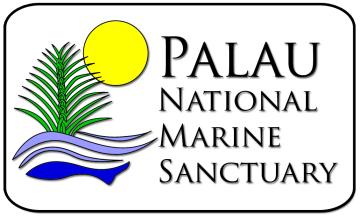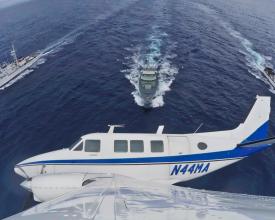
The Palau National Marine Sanctuary: Protecting a nation’s entire marine territory to ensure sustainable development, enhance food security, boost tourism and enrich biodiversity conservation

The Palau National Marine Sanctuary (PNMS) was the first case of a country dedicating its entire marine territory to conservation, raising global attention. Traditional practices of Whole Domain Management, and the Protected Area Network (PAN) Act provided the foundation for the protection of the entire Exclusive Economic Zone (EEZ), which was proclaimed in October 2015. The major innovation is the development of a holistic sustainable development rationale: the MPA is Palau’s major effort to combat the impacts of climate change and Illegal, Unreported and Unregulated Fishing.
Context
Challenges addressed
- Protecting an area of over 630,000 square kilometers from illegal, unregulated and unreported fishing, human and drug trafficking and other illegal activities with limited resources
- Transitioning from a export-based commercial fishing industry to a truly domestic, sustainable fishing industry that benefits the people and the community.
- Developing ecotourism opportunities that will promote and stimulate a sustainable, environmentally-friendly tourism industry that attracts high-value, environmentally-minded visitors.
- Engaging the community to be a part of the protection and conservation of the environmental resources
Location
Process
Summary of the process
Building Blocks
Developing a management model based on traditional knowledge
Palau has a long history of managing its fisheries. For generation upon generation, the Traditional Chiefs placed vulnerable reef areas off limits to fishing, known as a “bul,” to protect both biodiversity and the livelihoods and food security of their people. In these modern times, it is broadly accepted that “marine capture fisheries have direct impacts not only on the target market species, most significantly tuna, but also can have large impacts on a number of incidentally caught species, some of which are particularly vulnerable to overexploitation and can directly degrade habitat and can have broad indirect or collateral effects on community structure and processes.
Using this traditional method of conservation, Palau has created a "whole-domain" management approach from ridge to reef and beyond, the most ambitous component being the Palau National Marine Sanctuary. As Palau moves forward with the implementation of the PNMS, the Bul concept is kept in the forefront of all processes.
Enabling factors
- Overwhelming commuinity support due to traditional knowledge and practice of the Bul
- Recognition of the relevance of traditonal practices by the National Government
- Global support for the use of traditional pracitices to guide formalization of conservation
Lesson learned
- Initiating community support early on in the process was crucial in the process of passing the legislation and implementing the MPA
- Seeking lasting partnerships with organizations and governments that recognize the values of the importance of tradition, community led conservation and environmental protection.
Establishing a sustainable financing mechanism
The financing scheme for the Sanctuary is also novel. Under the law creating the Sanctuary, all tourism visitors must pay a Pristine Paradise Environmental Fee (PPEF), which, will be used to ensure surveillance, enforcement and necessary administration of the PNMS. A very strong effort is also underway to supplement this anticipated annual revenue of $1.5 million with contributions with country partners and friends. Palau is in the process of raising such funds and in establishing a companion Sanctuary Endowment Fund into which the contributions will be placed.
Much of this additional funding will go towards establishing a comprehensive surveillance and monitoring program to enforce the law. This enhanced surveillance effort has, as a critical component continued and expanded trans boundary cooperation in the Micronesia region with neighbors and primary partners, the United States, Japan, Australia and the Republic of China, Taiwan.
Enabling factors
-Visitor support of this fee is important to the sucess of this endeavor. Palau must target visitors who realize that an additonal fee to protect Palau's environment is in everyone's best interest
-Industry cooperation is also essential. Palau is working with it's airline and travel partners to implement the collection of this fee
Lesson learned
- Soverign nations seeking to establish creative financing mechanisims for environmental conservation or other purposes need to be aware of the ripple effects to other sectors and stakeholders, however they also need to be aware of thier rights to implement these mechanisims in the global community.
Importance of partnerships in developing surveillance and enforcement capacity
The success of the National Marine Sanctuary will largely depend upon the quality of its marine surveillance and enforcement. As a Small Island Developing State (SIDS), Palau lacks the resources to adequately patrol its waters. Throughout the process of developing and implementing the PNMS, Palau has sought active partnerships with fellow nations, NGO’s and technology providers to develop and fund a comprehensive monitoring, control and surveillance strategy. Palau now looks forward to numerous contributions to its surveillance and enforcement capacity in the coming months.
Enabling factors
- Pre-existing relationships
- Complementary expertise of specific partners
- Collaboration of neighbor nations in trans-boundary enforcement efforts
Lesson learned
-The development of a clear strategy with a timeline, recommendations and budget are essential in developing an effective maritime surveillance and enforcement regime.
- With a clear strategy, seeking effective partners becomes more achievable.
Impacts
The announcement of the PNMS has demonstrated, to great international attention, how protected areas not only mainstream biodiversity into the climate change sector, but also serve as a fundamental component of strategies to provide and ensure sustainable development pathways for small island states through durable and lasting partnerships. The Sanctuary is one of the world’s most ambitious ocean conservation initiatives aimed at not only protecting Palau’s marine resources, but also the world’s tuna stocks, by managing 80% of the MPA as a “no-take zone”.
Palau is a pioneer in recognizing that its economy is completely dependent on sustaining its natural resource base, and of translating this into practice. In the future, it is anticipated that new employment opportunities will be created, through ecotourism opportunities and the associated rise in the standard of living, fish stocks and reefs will rebound due to reduction of fishing, and food security will be ensured for Palau's people and visitors. More immediate impacts of the PNMS legislation passing include the protection of all marine mammals, sharks and rays in Palau's EEZ as well as a more effective means of prosecution of IUU fishing vessels due to stiffer requirements, penalties and fines in the PNMS legislation.
Beneficiaries
Direct Beneficiaries:
- The people of Palau
- Tour operators
- Visitors
Indirect Beneficiaries:
- The entire Pacific region will benefit (spill-over effect)
- Other countries in the process of MPA establishment may learn from Palau's successes and failures.

